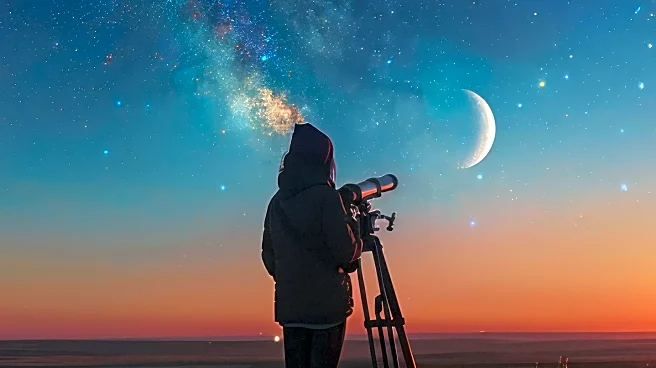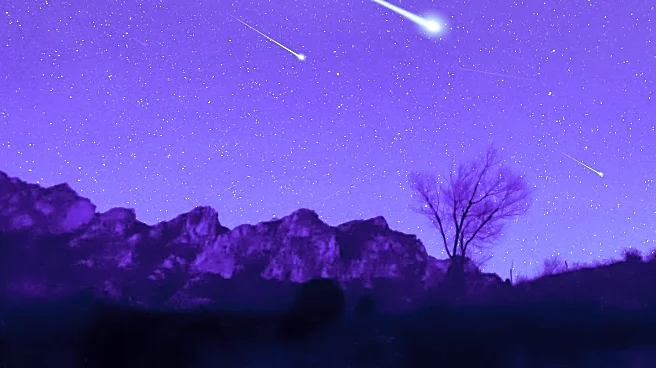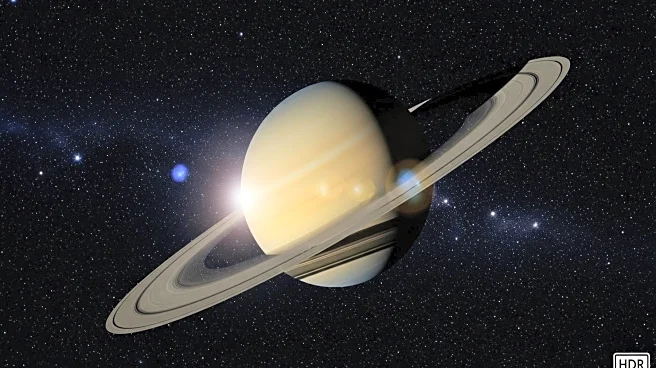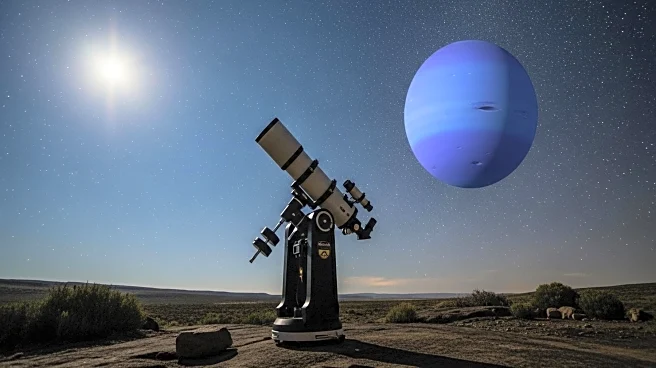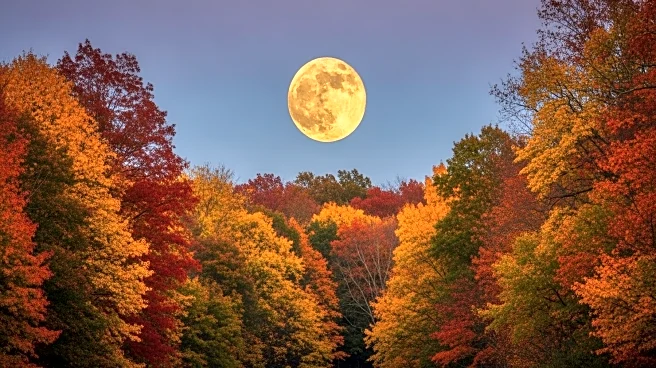What is the story about?
What's Happening?
The fall season officially begins with the Autumnal Equinox on September 22 at 2:19 pm Eastern. This astronomical event marks the moment when the sun's center is directly over the equator, transitioning into the southern hemisphere. As daylight decreases by approximately 2.5 minutes daily, the longer nights provide ideal conditions for stargazing. This season, Saturn and Jupiter will return to the night sky, offering spectacular views for astronomy enthusiasts. Saturn reaches opposition, presenting a unique view of its rings, while Jupiter rises early in the morning, gradually moving into the evening sky. Additionally, three full moons will occur between the equinox and the winter solstice, including the Harvest Moon on October 6, which traditionally aids farmers with its extended light.
Why It's Important?
The Autumnal Equinox not only signifies the start of fall but also brings unique astronomical phenomena that can impact cultural and agricultural practices. The Harvest Moon, for instance, historically provided farmers with additional light to harvest crops, a tradition that continues to hold significance. The visibility of planets like Saturn and Jupiter offers educational opportunities and encourages public interest in astronomy. These celestial events can also influence cultural activities, such as festivals and celebrations centered around the changing seasons. The equinox itself is a reminder of the Earth's natural cycles, fostering appreciation for the environment and its rhythms.
What's Next?
As the season progresses, stargazers can anticipate the gradual shift of Jupiter into the evening sky, dominating the eastern nighttime hours by the winter solstice. Venus, currently visible in the morning, will sink toward the horizon, becoming less visible by December. Mercury will also make a brief appearance near Venus in late November, offering a challenge for early risers. These planetary movements will continue to provide opportunities for observation and study, potentially inspiring educational programs and community events focused on astronomy.
Beyond the Headlines
The equinox and subsequent celestial events highlight the interconnectedness of natural cycles and human activities. The Harvest Moon's role in agriculture underscores the reliance on natural phenomena for traditional practices. As interest in astronomy grows, these events may encourage discussions on environmental stewardship and the importance of preserving clear skies for future generations. The cultural significance of these astronomical occurrences can also foster a sense of community and shared heritage, as people gather to observe and celebrate the wonders of the night sky.
AI Generated Content
Do you find this article useful?
